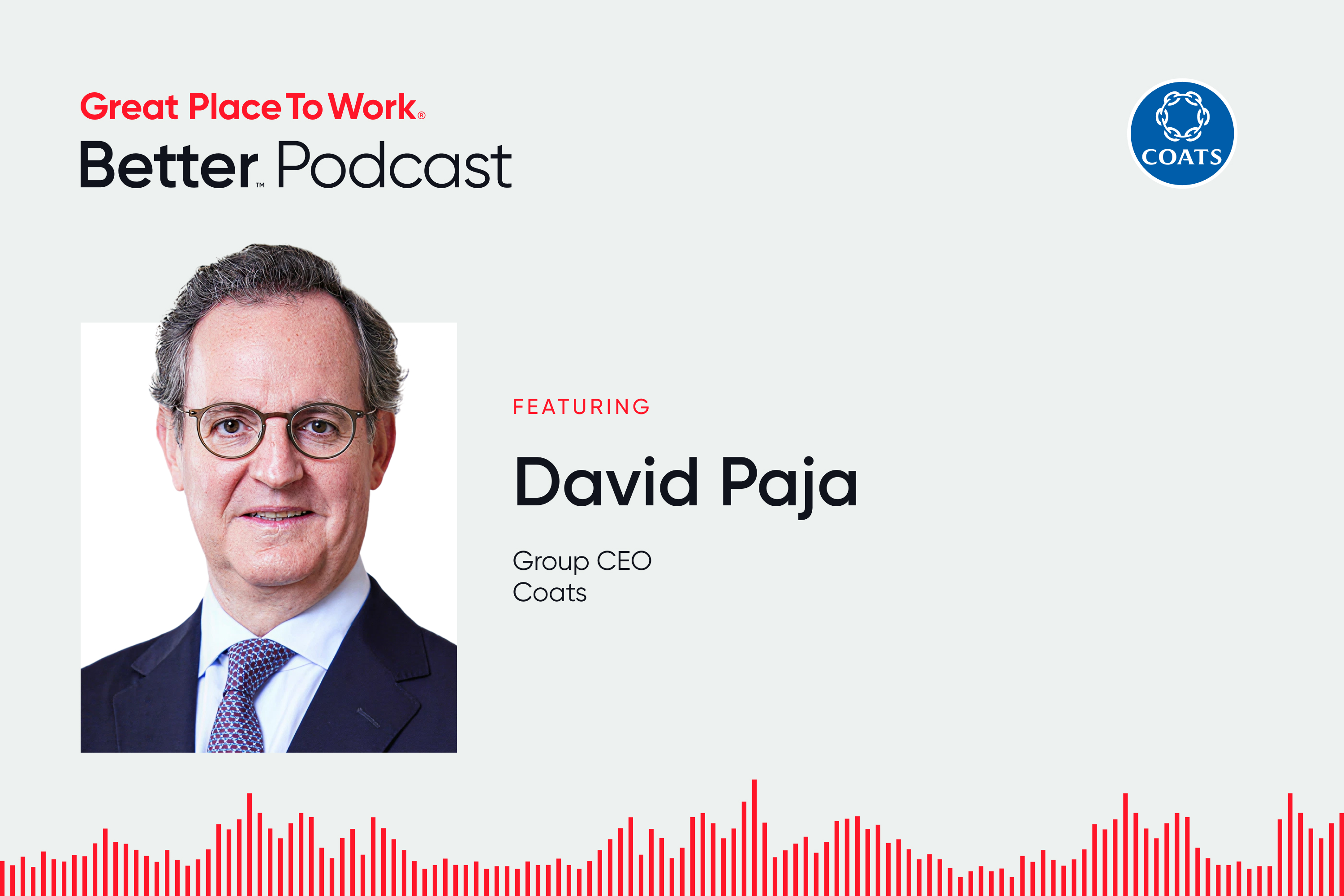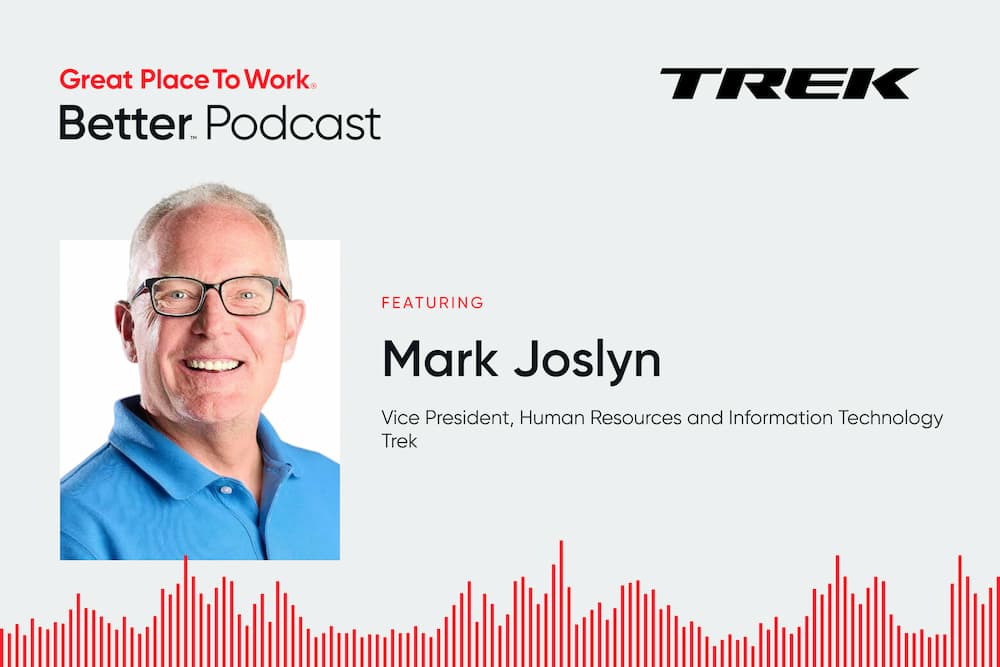Agility, Benefits of Company Culture
Here’s how business agility helps your organization overcome challenges and innovate.
People of a certain age will remember a time when watching a movie meant driving to a brick-and-mortar store to rent a VHS tape. Today, the phrase “Be kind, rewind” is as outdated as calling collect.
For organizations and their people, change is constant : adapting to emerging technologies, wavering market forces, and the introduction of an industry competitor.
It’s an organization’s ability to quickly adapt and respond that is the key to growth. Business agility is a powerful tool leaders can turn to in response to disruption, regardless of your industry. Incorporating agile methods is part of your core strategy, positioning teams to transform tough problems into innovative solutions.
For leaders, the benefits of business agility are manyfold, from enhanced customer service and engaged employees to reduced costs and better decision-making.
Understanding business agility
Business agility is the ability for an organization to adapt and evolve in uncertain or changing environments to remain competitive and achieve its business goals.
Agility isn’t specific to the tech industry, it’s just as vital to industries like retail and hospitality. It’s a set of capabilities that spans the entire organization — from leaders trusting employees with decision-making to embracing new tools to designing a workplace that fosters creativity. Business agility plans may include developing new products or services to remain competitive, meeting the demands of disruptors such as AI, or tapping into game-changing ideas from your employees.
Key benefits of business agility
Small or large, companies of any size can benefit from a commitment to business agility as part of their overall strategy. Increased competitiveness New competitors can emerge on the scene overnight. When businesses are agile, they can take advantage of new opportunities and rise to meet competitive challenges. Improved customer satisfaction
Increased competitiveness
New competitors can emerge on the scene overnight. When businesses are agile, they can take advantage of new opportunities and rise to meet competitive challenges.
Improved customer satisfaction
Customers are the backbone of any business. Continuously seeking out and responding to customer needs and feedback should be at the heart of your agile practices. A simple, but compelling example of this is at Wegmans, where frontline employees are given the authority to “serve the customer as they need to be served at that moment.”
Enhanced employee engagement
Embracing business agility fosters a culture of empowerment and ownership among employees. When you let your people take the reins, great things happen. Employees who have a great workplace are 46% more likely to say they give extra effort and 34% more likely to say they adapt quickly to change.
At The Wonderful Company, a program called “Way of Work” intentionally trains frontline employees to identify and solve business problems. One example is a worker in the field who came up with a fast solution to change the flat tires quickly and safely on their heavy harvesting machines.
Resilience in response to industry changes
An agile business is one that fosters a culture of continuous improvement. In turn, this helps position organizations to better adapt to emerging trends and respond to industry changes.
KPMG is one company that helps stay ahead of industry changes by upskilling its team. The organization is preparing its workers to embrace AI with its “GenAI 101” program. Employees are introduced to key AI terminology, learn the mechanics of effective AI prompts, and how AI can be implemented in the workplace while mitigating risk.
Reduced costs and improved efficiency
An agile business is one that fosters a culture of continuous improvement. In turn, this helps position organizations to better adapt to emerging trends and respond to industry changes.
Companies like those on the Fortune 100 Best Companies to Work For® List are an example of agile performance. At the 100 Best, companies on average have revenue per employee that is 8.5 times higher than the U.S. market.
Better decision-making
Implementing agile practices promotes faster, more informed decision-making processes. Leveraging data and feedback loops help organizations understand their behavior and outcomes before making costly mistakes. This way, they can make iterative improvements to a product or service — even in a challenging environment.
When it comes to people, data-driven insights from employee surveys help guide leaders to measure and improve the nine high-trust behaviors that are crucial to building a company culture. Leading from a place of trust helps employees thrive, which fuels company performance and revenue.
Increased innovation
An agile mindset encourages continuous improvements and innovative practices that give businesses a competitive edge.
How competitive? Great Place To Work® research shows that companies with the highest “Innovation By All” metric have a staggering 550% higher revenue growth compared to companies with a low score.
Deloitte is one company that is embracing innovation and leading the way in ESG practices. In an effort to commit to achieving net-zero emissions, the company is working with Indigenous peoples in countries around the world to advance nature-based climate solutions and provide insights into environmental issues.
How to improve business agility in your workforce
Your people play an essential role in either accelerating or hindering business transformation. Here are eight drivers of agility in your workforce, backed by Great Place To Work research.
- Recognition for those who try new and better ways of doing things: When employees are celebrated for trying new things regardless of the outcome, they are 253% more likely to quickly adapt to change.
- Psychological safety that allows everyone to take smart risks: Innovation happens when employees feel safe enough to take reasonable risks. Psychological safety helps create an environment where even failure can lead to growth.
- High levels of cooperation across teams and between departments: When employees believe they can count on colleagues to cooperate, they are 132% more likely to quickly adapt to change, per Great Place To Work data.
- Benefits that support employees’ needs inside and outside of work: Employees deeply value childcare benefits, flexible work options, and generous retirement benefits — tools that allow them to build a foundation of security from which they feel empowered to take risks.
- A clearly communicated vision for the future from top leaders: When employees say leaders have a clear view of where their company is going, they are 51% more likely to adapt quickly to change.
- Employees feel involved in decisions that affect them and their work: When employees say they are involved in decision-making, they are 41% more likely to quickly adapt to change.
- A commitment to lifting up local communities: Employees who say they feel good about how their company contributes to the community are 34% more likely to quickly adapt to change.
- Every employee, regardless of role, has a voice and feels respected: When employees say they are treated as a respected and valued member of the team, they are 31% more likely to quickly adapt to change.
Overcome challenges in building business agility
Agility relies on innovation and the ability to adapt to changing market conditions. But doing things differently isn’t without its challenges. Here are some obstacles leaders may face when implementing agility methods and how to overcome them:
Problem: Resistance to change — Employees may be skeptical about adopting new agile practices and feel uncertain about new ways of working. They may also see agility as a threat to not only their way of working but also their position.
Solution: Empowerment and autonomy — Change is realized through your people. Hold workshops on agility practices, so people see change as an opportunity for growth. Empower employees to take initiative and make decisions, which will break down resistance and encourage innovation.
Problem: Stagnating minds — If people don’t feel they can grow professionally, they may feel stuck and blocked from contributing new ideas.
Solution: Continuous improvement — Get unstuck by fostering a culture of continuous improvement by investing in employee training and development. This translates into increased innovation and adaptability, as teams stay competitive by learning new technologies and methodologies.
Problem: Organizational silos — Silos within a business often isolate employees, making it difficult for subject matter experts to share knowledge, resources, and collaborate on projects; all of which can hamper innovation.
Solution: Cross-functional collaboration — Break down silos by establishing cross-functional teams. Teams that span departments, disciplines, and different ways of working are an organization’s superpower when it comes to solving tough challenges and driving growth.
Measuring the impact of business agility
You can’t improve what you don’t measure. Organizations need to measure the impact of agile practices so they can make iterative improvements for greater agility.
There are four broad areas organizations should measure to track the progress of their efforts:
- Customer satisfaction
- Operational performance
- Financial performance
- Employee engagement
Your people play an essential role in either accelerating or hindering business transformation. Employee surveys are a vital tool in listening to your people as they uncover innovative solutions in response to change:
p>Your people play an essential role in either accelerating or hindering business transformation. Employee surveys are a vital tool in listening to your people as they uncover innovative solutions in response to change:Embrace agility for long-term success
With rapid changes to technology and the need for innovative solutions, organizations that embrace agile practices are the ones best positioned for long-term success
While agility can transform organizations and drive sustainable growth, the measure of that success lies in benchmarking your culture.
The Great Place To Work platform offers analytics and insights to drive your business and people to uncover new opportunities in a complex climate.
Explore the survey platform and become Great Place To Work Certified™ today.
Turn culture insights into business wins
Let the Trust Index™ Survey reveal your workplace’s hidden strengths and areas for growth. Start transforming today.











